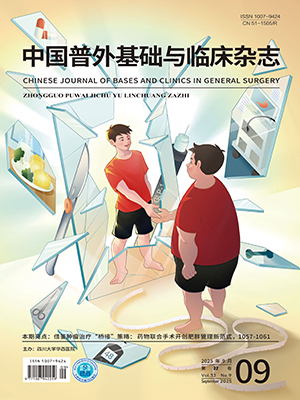ObjectiveTo summarize our experience in treating highrisk carotid stenosis. MethodsWe retrospectively analyzed the clinical characteristics, treatment, and outcomes of 24 patients with highrisk carotid stenosis in our department from January 2001 with emphasis on the application of carotid stents and shunting tubes. ResultsAll patients were successfully treated, with 11 patients undergoing carotid angioplasty and stenting (CAS) and 13 patients receiving carotid endarterectomy (CEA) and shunting. No death, stroke, and ischemic neurological deficit occurred in 30 days postoperatively. ConclusionSelective application of CAS and shunting in CEA can effectively reduce complications and improve therapeutic effects in patients with highrisk carotid stenosis.
Citation: HAN Wei,FU Weiguo,WANG Yuqi,GUO Daqiao.. Surgical Management of HighRisk Carotid Stenosis(Report of 24 Cases). CHINESE JOURNAL OF BASES AND CLINICS IN GENERAL SURGERY, 2004, 11(4): 304-306. doi: Copy
Copyright © the editorial department of CHINESE JOURNAL OF BASES AND CLINICS IN GENERAL SURGERY of West China Medical Publisher. All rights reserved




